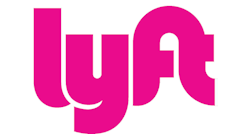Lyft Announces New App, Transportation Options, and Shared rides improvements
Lyft has announced a new version of the Lyft app that improves shared rides, integrates directly with cities and transit agencies, and simplifies its passengers’ overall experience. Combining product design with local-government-led city planning is an important step forward, and a first in the rideshare industry.
Improving people’s lives with the world’s best transportation isn’t just Lyft’s mission — it’s co-founders John Zimmer and Logan Green’s life work.
Green grew up in LA stuck in traffic, and while attending UCSB, was the youngest-ever member of the Santa Barbara City Council’s Metropolitan Transit District’s Board of Directors. On the East Coast, Zimmer attended Cornell’s Hotel School. During his senior year, he took an urban planning course, “Green Cities,” led by Dr. Robert Young. The class opened his eyes to the fact that cars are used just 4 percent of the time, but cost the average American more than $9,000 a year to operate. Earlier this year, Green honored his friend and mentor by announcing Lyft’s Carbon Neutral program.
Sharing the ride
The continued growth of shared rides brings massive benefits to our communities — more shared rides means fewer cars on the road, and less congestion. That’s why Line rides will now be part of a larger ride type called Lyft Shared rides. Lyft has set a goal to make Shared rides account for 50 percent of all trips on the Lyft platform by the end of 2020. Passengers already select Shared rides more than 30 percent of the time in markets where they’re available. And with the new version of the app, Lyft has seen up to a 5 percent increase in Shared rides.
Integrating with public transit
The new version of the app integrates directly with public transit to help solve some of the biggest transportation challenges: providing late-night service, filling first-mile and last-mile gaps, providing access to transportation deserts, and delivering on-demand paratransit solutions. Lyft has partnered with many transit agencies before, and is excited to take the partnerships to the next level.
Lyft now has transit partnerships with more than 25 cities and counties across the US. The first two integrations with the app are coming to Marin County and Santa Monica, California through partnerships with the Transportation Authority of Marin and the Big Blue Bus in Santa Monica.
“Transportation today is being transformed by technology. Lyft is at the forefront of this transformation proving that if you make alternatives to driving yourself as convenient and reliable as possible, people will use it. I'm thrilled to see Lyft bring transit into their app to complement transit systems and give people even more options to get around without use of their own vehicle — the key to reducing traffic congestion,” said Mary E. Peters, former US Secretary of Transportation.
Simplifying your experience
The new version of the Lyft app starts by asking where users are going and then quickly provides the best ride options. By making price and time comparison clear, it’s easy to find the best choice for you. We’ve also added a “one tap to ride” feature so you can quickly request your most frequent ride types and destinations.
To help reduce congestion, users will also start to see more practical pickup and drop-off spots in heavily trafficked areas, like Valencia Street in San Francisco. Earlier this year, Lyft partnered with local officials to test a Valencia Street experience that diverted over 20,000 pickups to side streets where it’s safer for drivers to stop. Lyft will be rolling out similar programs across the markets.
Improve our cities
When we share the ride — on Lyft or public transit — we play a major role in making our cities more livable. Lyft is always looking for public sector partners to join with direct integration into the Lyft app, and in collaborating to improve transportation for communities.
Lyft's redesigned app is now live for millions and will continue rolling out by the end of next month.


